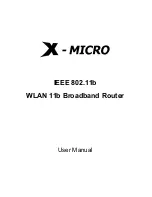
NPT-1020 Installation and Maintenance Manual
Maintenance
ECI Telecom Ltd. Proprietary
7-2
Item
Inspection/Check
Intervals*
W
M
Q
7
Check for proper operation of the fans (no abnormal noise and
vibrations) in all NEs.
X
8
Clean all areas around the platform in the rack and the rack’s front door
(if applicable), using a vacuum cleaner.
X
9
Check that the cables connecting the DC power sources (main and
backup) to the RAP are properly connected.
X
10
Check that the external alarm cables are properly
connected to the RAP.
X
11
Check there are no alarm indications on the cards and modules.
X
12
Check that all RAP LEDs turn on and that the buzzer sounds while the
POWER ON pushbutton on the RAP panel is pressed.
X
13
Check that all card and module LEDs turn on when
performing the LED TEST operation using the LCT-APT.
Note
: LEDs for FE interfaces and LEDs for Laser On
indications are not checked by the LED test operation.
X
14
Perform a visual check of LED indications.
X
* Legend:
W
weekly
M
monthly
Q
quarterly
7.4
Onsite Troubleshooting
The purpose of onsite troubleshooting is to identify the hardware causing the malfunction and return the
equipment to normal operation as soon as possible.
Troubleshooting is usually initiated in response to one of the following conditions:
Alarm or performance degradation reported by the management station.
Alarm or malfunction detected onsite by maintenance personnel, either as a result of a
troubleshooting activity initiated by the management center personnel or as a result of a periodic
inspection or preventive maintenance action. Many problems can be detected via the various
indicators available on the NPT-1020 system components.
This chapter assumes familiarity with the NPT-1020, with SDH data, and with the LightSoft and EMS-APT
management stations. See the respective user manual for details on the various capabilities of the
management stations and for instructions on performing the necessary activities.
The following sections provide procedures for performing onsite troubleshooting for various trouble
categories. For each category, a troubleshooting table provides instructions for identifying the problem.
















































